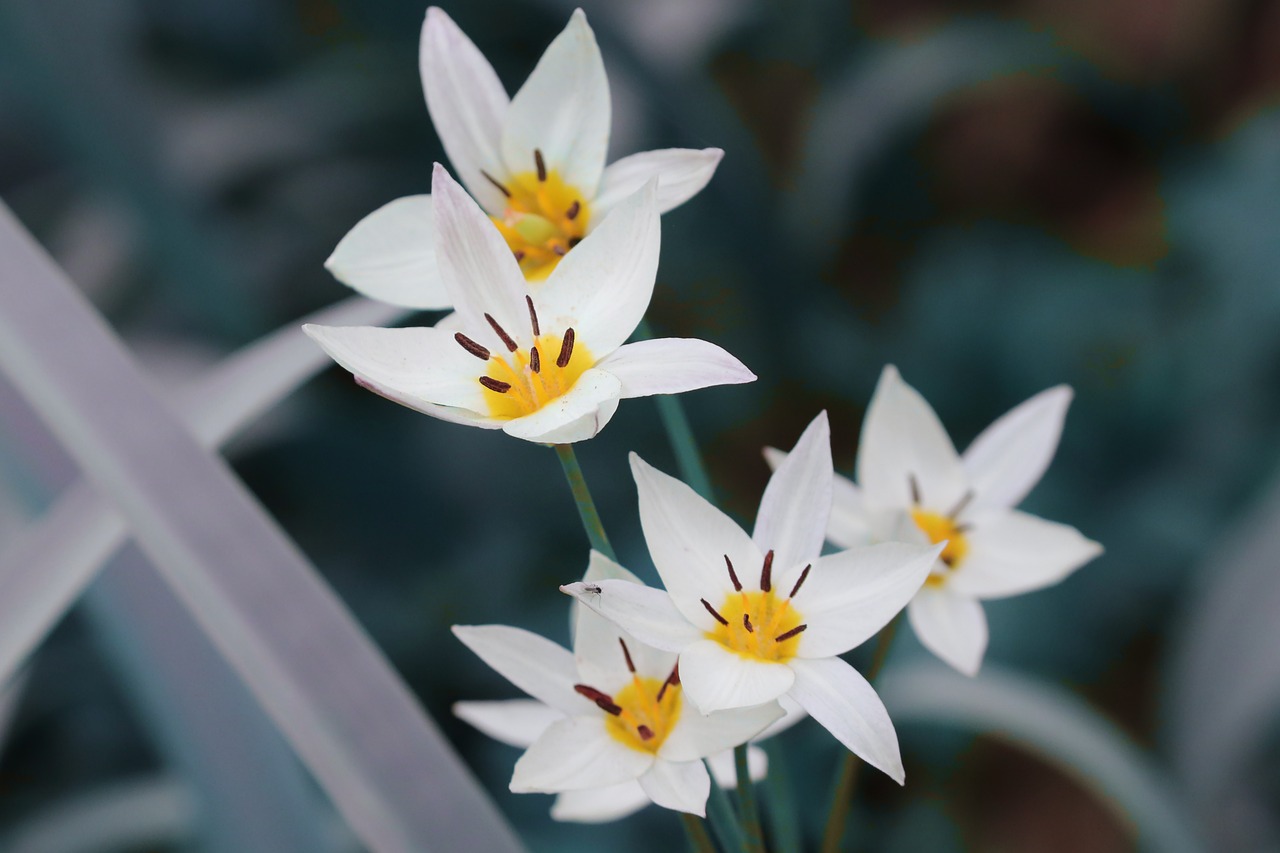Tulip trees, also known as Liriodendron tulipifera, exhibit a fast growth rate. In optimal conditions, they can grow 2 to 3 feet annually, reaching heights of up to 70 to 100 feet at maturity. This makes them a popular choice for home gardens and parks.
Understanding Tulip Trees
The tulip tree is a remarkable species native to North America. It belongs to the magnolia family and is renowned for its striking flowers and unique foliage. The tree gets its name from the tulip-shaped blossoms that bloom in late spring and early summer. These flowers are not only beautiful but also attract various pollinators, making them an excellent addition to any garden.

One of the defining characteristics of the tulip tree is its impressive growth rate. Home gardeners and park planners often seek trees that establish quickly and provide shade or aesthetic appeal in a relatively short time. The tulip tree fits this requirement perfectly.
Growth Rate Factors
Several factors influence the growth rate of tulip trees. Understanding these factors can help ensure optimal growth in home gardens and parks. Key elements include:
- Soil Quality: Tulip trees thrive in well-drained, loamy soil rich in organic matter.
- Sunlight: Full sun is essential for vigorous growth. These trees prefer at least six hours of direct sunlight daily.
- Watering: Young tulip trees require regular watering, especially during dry spells. Mature trees are more drought-tolerant.
- Climate: Tulip trees thrive in USDA hardiness zones 4 to 9, favoring temperate climates.
Ideal Growing Conditions
To maximize the growth rate of tulip trees, certain conditions should be met. Here are some ideal growing conditions:

| Condition | Ideal Requirement |
|---|---|
| Soil pH | 6.0 to 7.5 |
| Moisture Level | Consistently moist but well-drained |
| Sun Exposure | Full sun (6+ hours) |
| Spacing Distance | At least 30 feet apart |
Proper care during the early years is crucial. Young trees typically need protection from pests and diseases. Regular monitoring can help identify potential issues before they become serious problems.
Growth Stages of Tulip Trees
Tulip trees go through several distinct growth stages as they mature. Understanding these stages can aid gardeners in providing appropriate care. The stages include:
- Seedling Stage: This stage lasts for the first year. Seedlings are fragile and require protection from extreme weather conditions.
- Youth Stage: Lasting from years two to five, young tulip trees begin to establish their root systems and grow rapidly.
- Mature Stage: From five years onward, the tree reaches its full height and begins producing flowers.
A tulip tree’s growth can vary significantly depending on environmental factors. While they are known to grow quickly, some trees may take longer to reach their full potential based on their specific growing conditions.

This tree is not only valued for its growth rate but also for its strikingly beautiful appearance throughout the seasons. In spring, it showcases vibrant yellow-green flowers, while in the fall, the foliage transforms into brilliant shades of yellow, adding visual interest to any landscape.
Tulip trees can be a fantastic choice for those looking to enhance their gardens or parks with fast-growing, beautiful trees. Their ability to adapt to various soil types and conditions makes them versatile for many landscaping projects.
Caring for Tulip Trees
To ensure optimal growth and health, proper care for tulip trees is essential. This includes regular maintenance practices that promote strong roots, vibrant foliage, and abundant flowering. Here are some key care tips for growing tulip trees effectively in home gardens and parks.
Watering Requirements
Watering is crucial during the early stages of a tulip tree’s life. Young trees are particularly sensitive to drought. Here are some watering guidelines:

- Frequency: Water young trees deeply once a week, especially during dry periods.
- Mature Trees: Once established, mature tulip trees can tolerate some drought. However, they benefit from supplemental watering during prolonged dry spells.
- Signs of Water Stress: Look for wilting leaves or leaf drop as indicators that your tree may need more water.
Fertilization
Fertilizing tulip trees helps to promote healthy growth and flowering. When and how you fertilize can impact their development:
- Timing: Fertilize in early spring, just before new growth begins.
- Type: Use a balanced slow-release fertilizer that contains nitrogen, phosphorus, and potassium.
- Application: Follow package instructions for application rates based on the size of the tree.
Over-fertilization can be harmful. It is important to avoid excessive nutrients that can lead to weak growth or susceptibility to pests.
Pest and Disease Management
Tulip trees are generally resistant to many pests and diseases. However, they can still be affected by certain issues. Here are common pests and diseases to watch for:
| Pest/Disease | Symptoms | Treatment |
|---|---|---|
| Scale Insects | Sticky residue on leaves, yellowing foliage | Insecticidal soap or horticultural oil |
| Leaf Spot | Browning spots on leaves, premature leaf drop | Remove affected leaves, improve air circulation |
| Canker Diseases | Lesions on bark, dieback of branches | Prune affected areas, use fungicides if necessary |
Regular monitoring of your tulip tree can help catch problems early. Maintaining good air circulation and avoiding wet foliage can also reduce the likelihood of disease.
Landscape Uses for Tulip Trees
Tulip trees are versatile and can be used effectively in various landscape designs. Their height and beauty make them suitable for different settings. Here are some popular uses:
- Shade Trees: Due to their large canopy, tulip trees provide excellent shade in residential yards and public parks.
- Aesthetic Features: Their striking flowers and fall colors add seasonal interest to landscapes.
- Windbreaks: Planting multiple tulip trees can create a natural windbreak, protecting smaller plants and structures from strong winds.
- Wildlife Habitats: The flowers attract pollinators, while the tree itself provides habitat for various bird species.
When planning a landscape with tulip trees, consider their mature size and spacing needs. Proper placement will ensure that they thrive without competing with other plants for resources.
Propagation Techniques
If you’re interested in growing more tulip trees, there are several propagation techniques available. Here are the most common methods:
- Seed Propagation: Collect seeds from mature trees in the fall. Stratify them in a cold environment for several weeks before planting in spring.
- Cuttings: Take softwood cuttings in late spring or early summer and root them in a moist medium.
- Grafting: This method is often used to propagate specific cultivars or desired traits.
Each propagation method has its benefits and challenges. Choose a method based on your gardening goals and resources available.
Caring for tulip trees involves understanding their needs and addressing potential challenges. With the right attention, these magnificent trees can thrive in your garden or park, providing beauty and ecological benefits for years to come.
Environmental Benefits of Tulip Trees
Tulip trees provide numerous environmental benefits that enhance urban and rural landscapes alike. Understanding these benefits can help justify their inclusion in home gardens and public parks. Here are some key advantages:
Air Quality Improvement
Trees play a vital role in improving air quality by absorbing carbon dioxide and releasing oxygen. Tulip trees are particularly effective because of their dense foliage:
- Carbon Sequestration: Tulip trees capture significant amounts of carbon dioxide, helping to mitigate climate change.
- Oxygen Production: A mature tulip tree can produce enough oxygen for several people.
- Pollutant Absorption: These trees absorb various pollutants, such as sulfur dioxide and nitrogen oxides, improving overall air quality.
Soil Health Enhancement
Planting tulip trees can improve soil health in several ways:
- Root Structure: The extensive root system of tulip trees helps prevent soil erosion and improves soil structure.
- Organic Matter Contribution: Fallen leaves decompose, enriching the soil with organic matter and nutrients.
- Soil Microbial Activity: The presence of tulip trees encourages beneficial microbial activity, which is crucial for healthy soil ecosystems.
Wildlife Habitat Creation
Tulip trees serve as excellent habitats for various wildlife species:
- Birds: The flowers attract pollinators, while the tree itself provides nesting sites and shelter for birds.
- Insects: A variety of insects, including bees and butterflies, are drawn to the nectar-rich flowers.
- Mammals: Larger animals may use the shade and shelter provided by mature trees.
Tulip Tree Varieties and Cultivars
While the native tulip tree (Liriodendron tulipifera) is the most common, several cultivars and varieties exist that offer unique characteristics. Here’s an overview of some notable types:
| Cultivar/Variety | Description | Unique Features |
|---|---|---|
| ‘Fastigiatum’ | Pyramidal form with a narrow crown | Ideal for small spaces and urban environments |
| ‘Aureomarginatum’ | Golden-edged leaves | Adds visual interest with unique foliage color |
| ‘Tulipifera’ | The standard species with classic tulip-shaped flowers | Known for its height and broad canopy |
| ‘Chalcedon’ | Dwarf variety suitable for smaller gardens | Grows to a manageable height, making it ideal for limited spaces |
When selecting a variety or cultivar of tulip tree, consider your landscape’s specific conditions and aesthetic goals. Each type may have different growth habits, sizes, and care requirements.
Common Misconceptions About Tulip Trees
Despite their many benefits, there are a few misconceptions about tulip trees that can deter gardeners from planting them. Here are some common myths debunked:
- Tulip Trees Are Weak: Many believe that tulip trees are prone to breakage. In reality, they are quite sturdy when properly cared for.
- They Attract Pests: While no tree is completely pest-free, tulip trees have fewer pest issues compared to other species when healthy.
- Their Flowers Are Messy: The flowers do drop, but they decompose quickly and contribute to soil health rather than creating long-lasting messes.
Understanding these misconceptions can help more gardeners appreciate the potential of tulip trees in their landscapes.
Challenges in Growing Tulip Trees
While tulip trees are generally easy to care for, they do face certain challenges that gardeners should be aware of. Recognizing these challenges can help ensure successful growth:
- Pest Infestations: Occasionally, pests like aphids or scale may invade, requiring monitoring and treatment.
- Disease Susceptibility: Tulip trees can be affected by diseases such as leaf spot or canker if not cared for properly.
- Space Requirements: Given their large size at maturity, ensure sufficient space is available to prevent crowding with other plants.
Taking proactive measures to address these challenges will help ensure the long-term health and beauty of tulip trees in home gardens and parks.
Long-term Management of Tulip Trees
To ensure the longevity and health of tulip trees, long-term management practices are essential. These practices not only address immediate needs but also prepare the tree for future challenges. Here are some strategies for effective long-term care:
Regular Pruning
Pruning is crucial for maintaining the shape and health of tulip trees. Regular pruning helps to:
- Remove Dead or Diseased Wood: This prevents the spread of disease and improves overall tree health.
- Encourage Airflow: Proper pruning allows for better air circulation, reducing the risk of fungal diseases.
- Maintain Structure: Pruning helps maintain a strong structure, preventing branches from becoming too heavy and potentially breaking.
It is best to prune tulip trees in late winter or early spring before new growth begins. This timing minimizes stress on the tree and encourages healthy new growth.
Mulching and Ground Care
Applying mulch around the base of tulip trees has several benefits:
- Moisture Retention: Mulch helps retain soil moisture, reducing the need for frequent watering.
- Weed Suppression: A layer of mulch can prevent weeds from competing with the tree for nutrients and water.
- Temperature Regulation: Mulch helps maintain consistent soil temperatures, which is beneficial for root development.
A 2 to 4-inch layer of organic mulch, such as wood chips or shredded bark, is ideal. Make sure to keep mulch a few inches away from the trunk to prevent rot.
Monitoring Growth and Health
Regular monitoring of your tulip tree’s growth and health is vital. Here are some practices to consider:
- Growth Tracking: Keep a record of the tree’s growth rate and health over the years. This can help identify patterns or issues early.
- Pest Inspections: Regularly check for signs of pest infestations or diseases. Catching problems early can lead to more effective treatment.
- Seasonal Assessments: Assess the tree’s health at different times of the year to observe changes in foliage color, flower production, and overall vigor.
Final Thoughts
Tulip trees are remarkable additions to home gardens and parks due to their fast growth rate, stunning flowers, and environmental benefits. With proper care, they can thrive and become a valuable part of any landscape. Understanding their unique requirements, challenges, and best practices for care is essential for successful cultivation.
As you consider incorporating tulip trees into your outdoor spaces, remember their benefits extend beyond aesthetics. They contribute significantly to improved air quality, soil health, and wildlife habitats. By addressing their care needs and overcoming potential challenges, you can enjoy the beauty and benefits of tulip trees for generations to come.
In conclusion, whether you are a seasoned gardener or just starting out, tulip trees offer a rewarding experience. Their majestic presence can enhance your garden or park while providing ecological advantages that benefit the surrounding environment. Embrace the opportunity to grow these beautiful trees and witness their transformation over time.
